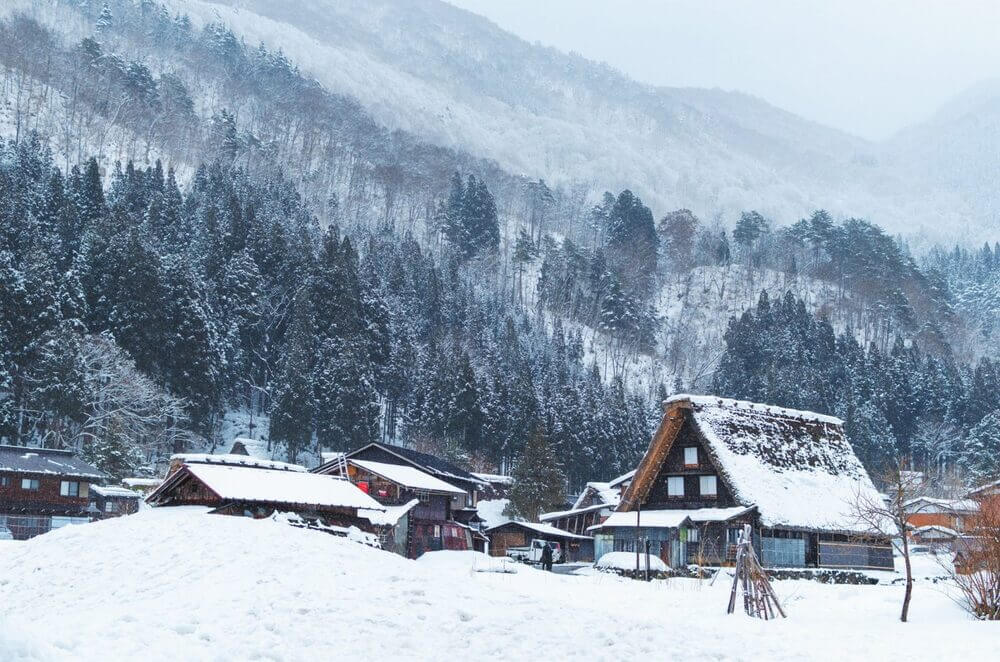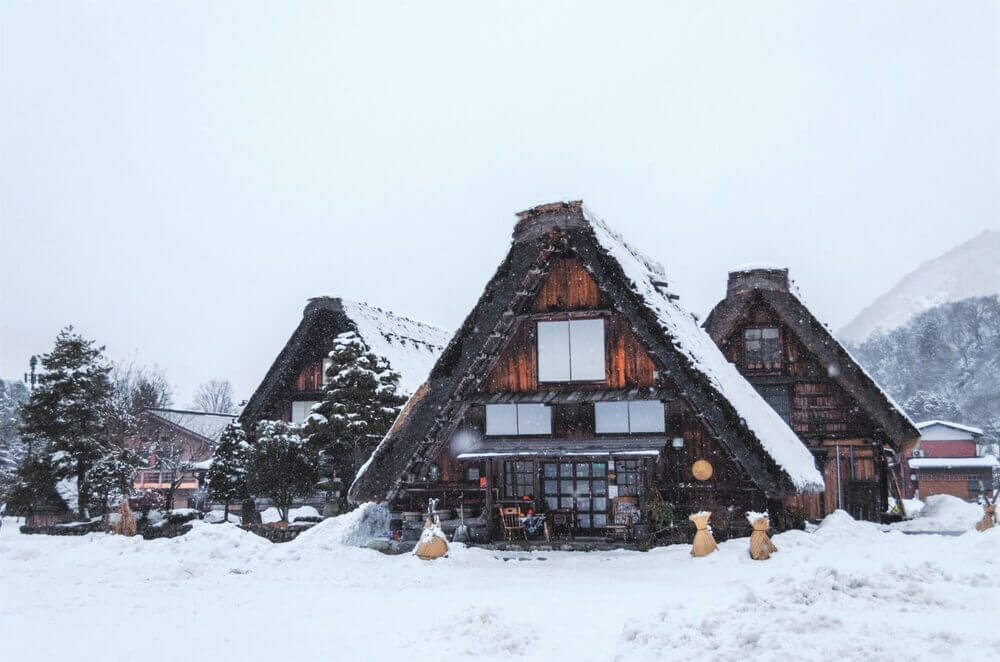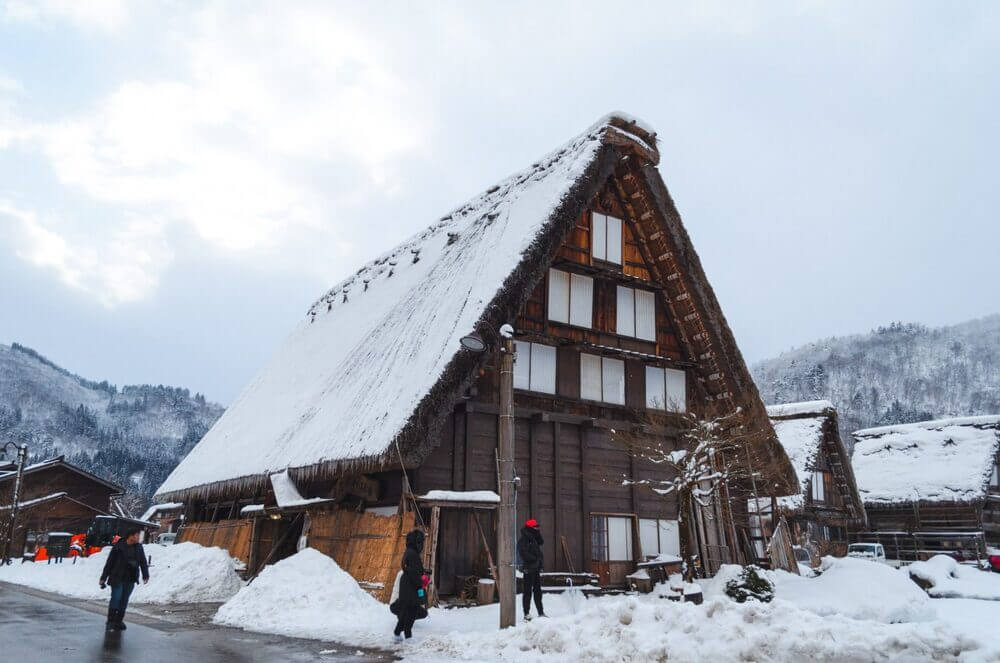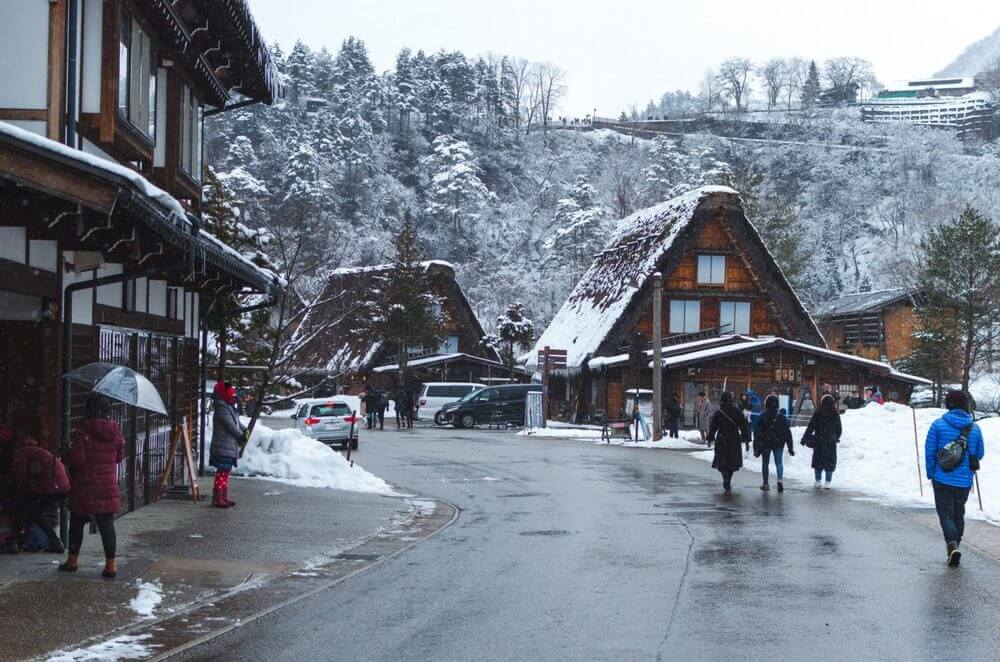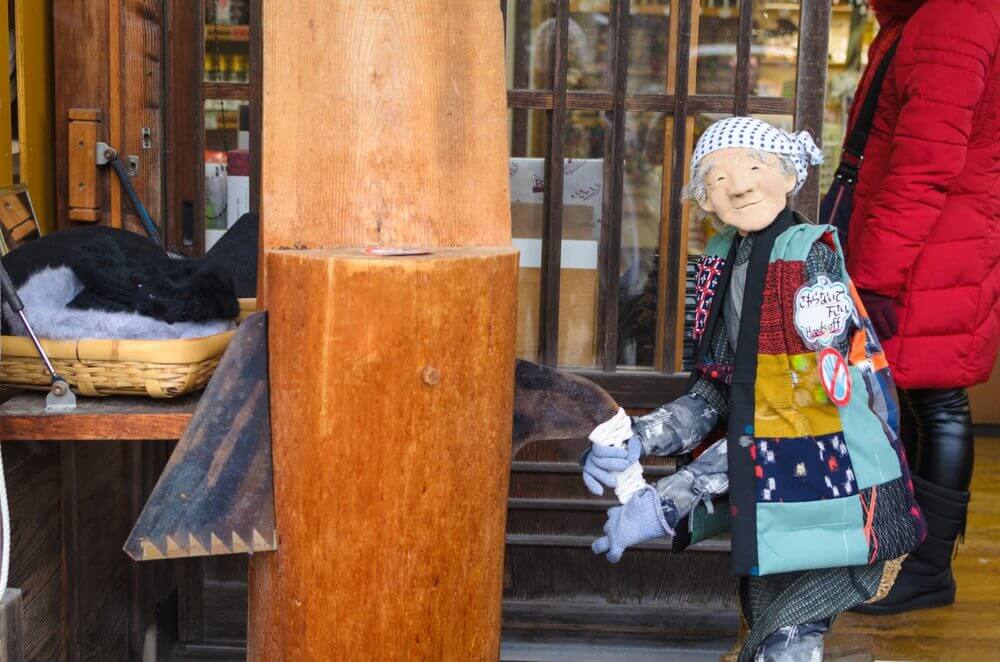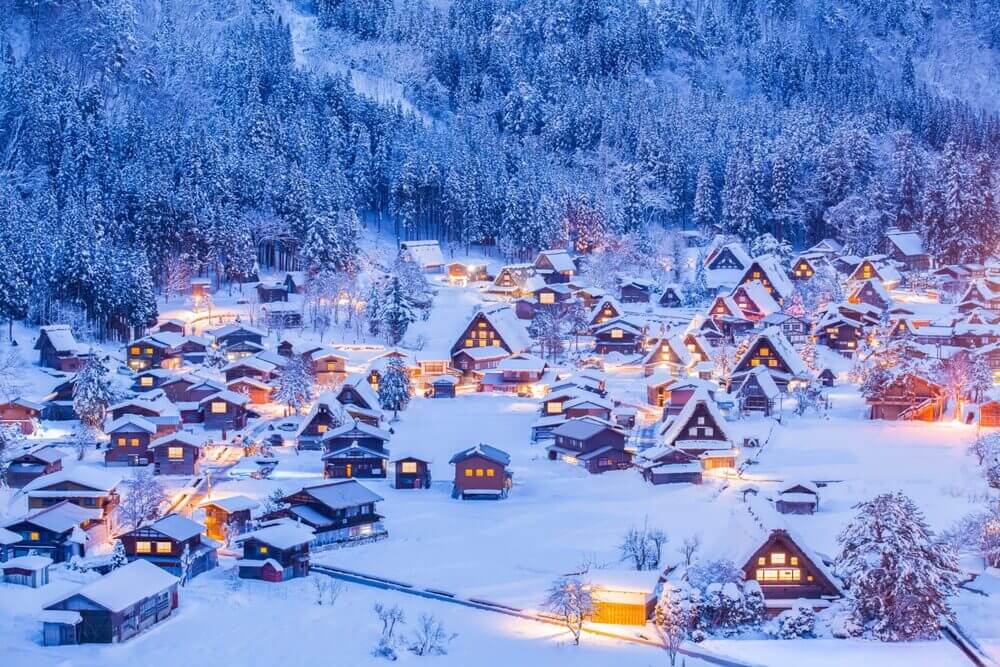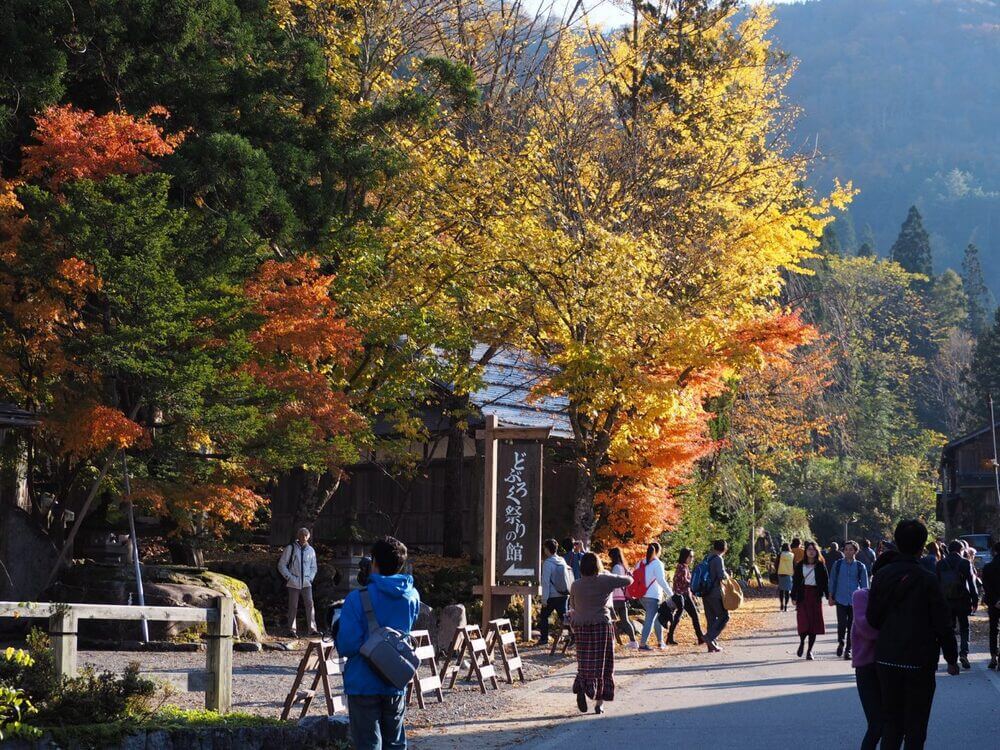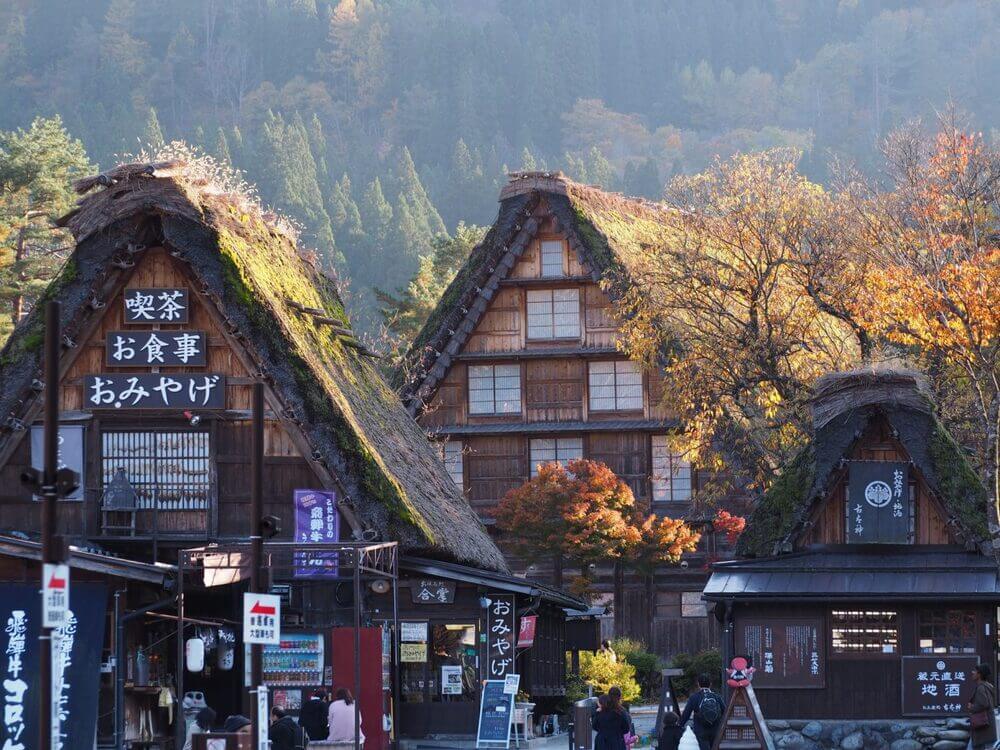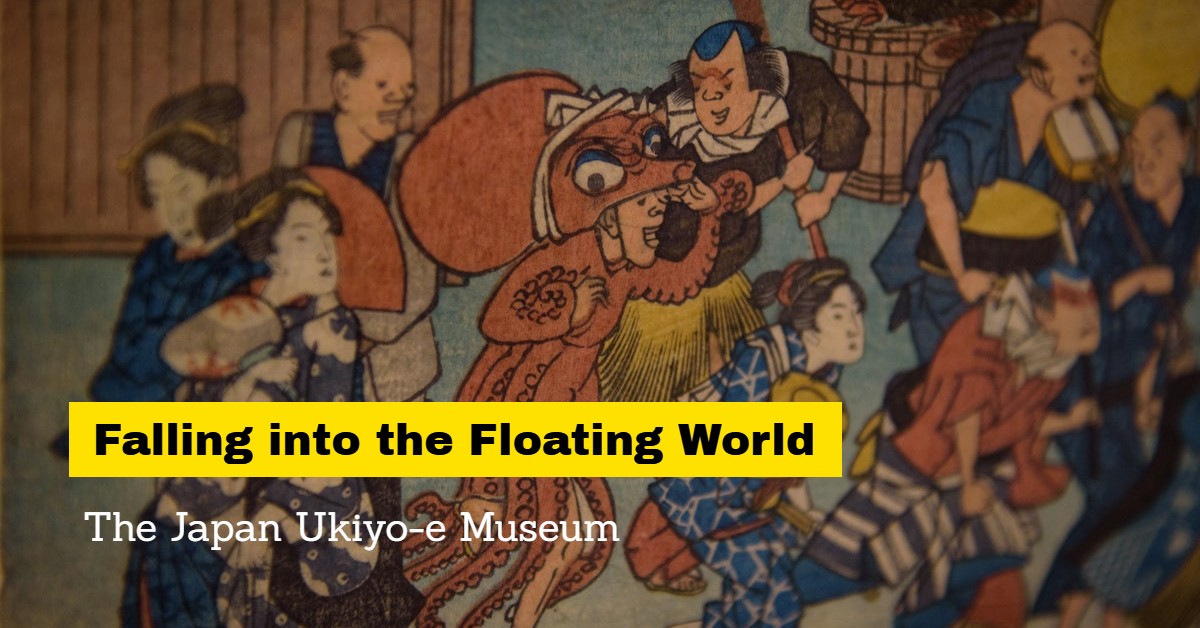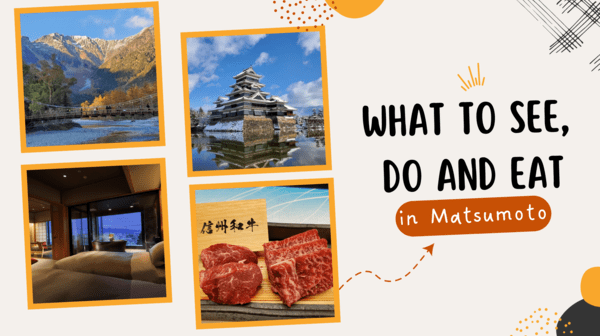Summary
About Shirakawa-go Village
Hidden amid the mountains and forests of Nagano’s neighboring prefectures Gifu and Toyama, you will find a unique remnant of Japanese history: The Historical Villages of Shirakawa-go and Gokayama. Designated as a World Heritage Site by UNESCO, these villages should definitely be on your must-visit list when travelling through Japan!
The Historical Villages of Shirakawa-go and Gokayama consist of three historical villages in total, which are Ogimachi, Ainokura and Suganuma. Although the World Heritage Site title is shared by two regions (Shirakawa-go and Gokayama), Shirakawa-go is arguably the most famous of the two, mainly due to the size of its (only) historical village Ogimachi and its easy accessibility, which is why we’re going to focus on it in this blog.
For a long time, Ogimachi and the rest of the Shirakawa-go area were cut off from the world around them due to their location in the mountains, but its people managed to survive and maintain their way of life by cultivating mulberry trees and breeding silkworms that lived on these trees in order to trade and sell raw silk. It is because of their isolation that the village has remained largely in its original state with dozens of historical houses. But what’s the big deal with these houses, you may ask. Japan has hundreds of old buildings, so what exactly makes these ones special?
To put it simply, it’s because of its unique architecture. This type of architecture is called Gassho-zukuri and is extremely rare in Japan. No nails or any other metal materials were used during the construction of the houses. Instead, houses were made with natural resources found in the area such as wood for the structure and straw for the roof. Gassho-zukuri, or Gassho-style, refers to the shape of the roof. “Gassho” means “joining your hands together in prayer”, and the roof resembles the shape of the hands (and arms) of a praying Buddhist monk.
Besides this nice resemblance, the steeply sloped, thatched roofs are actually built deliberately like this for an important purpose. Shirakawa-go is one of the areas in Japan that’s known for experiencing particularly heavy snowfall. About 2 meters of snow can fall during wintertime, which means that the roofs would have to withstand the weight of all that snow, but luckily the steepness of the roof helps the snow fall off.
The interior of the houses is also very interesting. Under the roof, there is a space that was often used as a workroom for breeding silkworms. Below that is the living space of the residents, and you’ll usually find a fireplace (“irori”) on the first floor that will have a fire burning all year round in order to prevent mold from forming on the thatch.
Being the biggest of the three historical villages, Ogimachi has the most houses and a part of those are open for viewing to the public. Many of the houses you see are used as a residence by local people who thrive on rice cultivation and tourism. One of the houses that is (partly) open to public is the Wada Residence. Designated as an important cultural property, it is the largest house in Ogimachi and beautifully preserved.
It’s only a short walk from the Shirakawa-go Bus Terminal and is open from 9:00~17:00. Admission costs 300 JPY for adults and 150 JPY for children.
There’s also a museum made up of several houses called the Gasshozukuri Minkaen Outdoor Museum. It’s like a mini-village in itself and features shops, shrines, restaurants and more. It’s open from March through November from 8:40 until 17:00, and from December through February from 9:00 until 16:00, with the last admission being 20 minutes before closing time. During December through March, the museum is closed on Thursdays (or Wednesday if Thursday is a national holiday). Admission costs 6oo JPY for adults and 400 JPY for children.
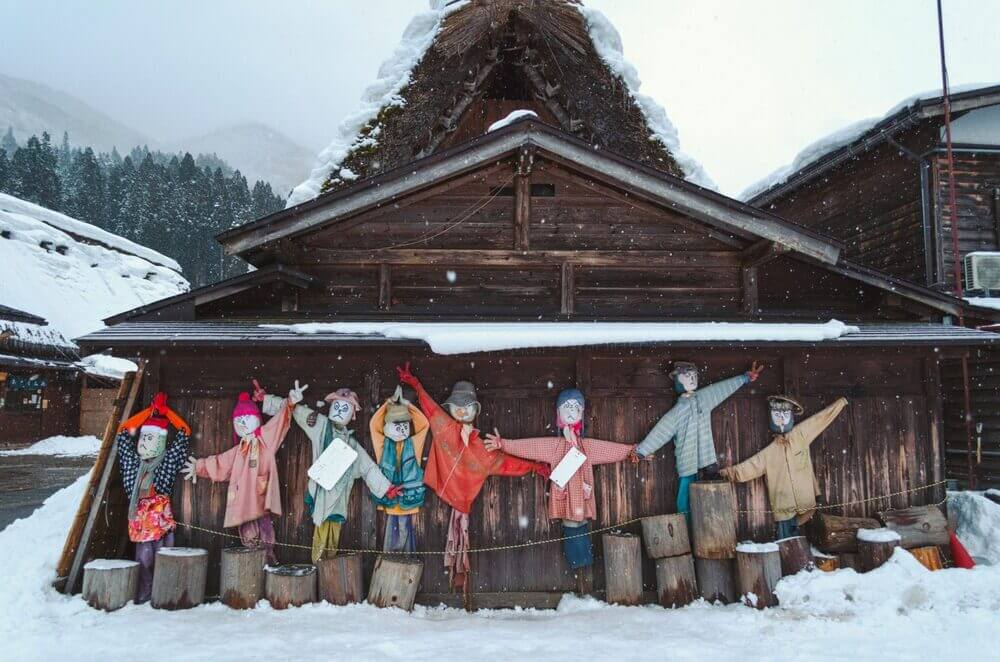
As you’re walking through the village, there are plenty of small shops where you can buy a souvenir or maybe get a snack and a nice warm cup of sake. If you want to have the full experience of being in a historical village, you could also choose to spend the night at one of the gassho-style houses. There are several guesthouses in Shirakawa-go which all require reservations in advance. Check out this website to see a list of the guesthouses.
Best Time to Visit
It’s actually very hard to say when the “best time” to visit is. Honestly, any time of the year is the “best time” to visit Shirakawa-go. There’s something special about the village’s scenery during each of the seasons. The blooming of cherry blossoms in spring, the fresh green of early summer, the golden colors of the trees in autumn, and of course, the magical snow-covered landscape during winter.
If you go in winter, there is a special light-up event held a handful of times in January and February. Due to the large number of tourists wanting to visit these events, reservations in advance are required to enter Shirakawa-go during this time (you can visit Shirakawa-go during the day before the event begins with no reservation, but will have to leave the village at 15:00 in that case). For more information about that, click here.
As you can probably tell by looking at the photos, Shirakawa-go is an absolutely stunning place that’s rich with history and culture. As a unique World Heritage Site, we highly recommend you visit it during your next trip to Japan.
How to Get to Shirakawa-go
Shirakawa-go is easily accessible via public bus, taxi or rental car. We’ve listed several routes below, so please check which one is the best for you.
From Takayama to Shirakawa-go
Takayama is closest to Shirakawa-go and thus has buses running frequently. Keep in mind that some of the buses require a reservation. For non-reserved buses, it is recommended to be at the bus stop 20 minutes in advance.
From Matsumoto to Shirakawa-go
Take the bus to Takayama (reservations not possible) and then transfer to the bus to Shirakawa-go.
From Tokyo to Shirakawa-go
When travelling from Tokyo, you would need to take the train and then transfer to the bus. Where you transfer depends on your schedule, but you can choose to travel by train to Toyama or Kanazawa (or Matsumoto) and transfer to a Shirakawa-go-bound bus from there.
Special Ticket
4-Day Alps Wide Free Passport
If you want to explore the best that the Nagano Prefecture and Gifu Prefecture have to offer, then we highly recommend you get the 4-Day Alps Wide Free Passport.
This passport allows you unlimited bus rides for 4 days, so you can fully experience all the wonderful places in Nagano and Gifu such as the castle town of Matsumoto and the beautiful mountain areas Kamikochi and Norikura, as well as the old town of Takayama and the nearby Shirakawa-go and Gero Hot Springs. In addition to unlimited rides in the designated areas, you also receive special discounts at various sightseeing facilities such as the Gasshozukuri Minkaen Outdoor Museum and Matsumoto Castle. You can get even more out of your trip by buying the passport that includes a return ticket for the Shinhotaka Ropeway.
Validity: Valid for 4 consecutive days from first use
Price: Adults 13,000 JPY (incl. the Shinhotaka Ropeway ticket, from April to November)
For more information, click here.
Three-Star Route Ticket
Interested in seeing more top-rated sites of cultural and historical importance? Then the Three-Star Route Ticket is the best option for you!
The Three-Star Route (Kanazawa / Toyama type) is a sightseeing route that takes you through exceptional parts of Japan to breathtaking sceneries, authentic places filled with history and culture and renowned World Heritage sites, which have been awarded three stars by the Michelin Green Guide to Japan. Of course, the historical village of Shirakawa-go is one of those places!
Validity: Valid for 4 consecutive days from first use, for one-way travel on selected bus lines between Matsumoto and Kanazawa or Toyama, or vice versa
Price: Adults 6,000 JPY (13 y/o and above), children 3,000 JPY (6~12 years old)
For more information, click here.

